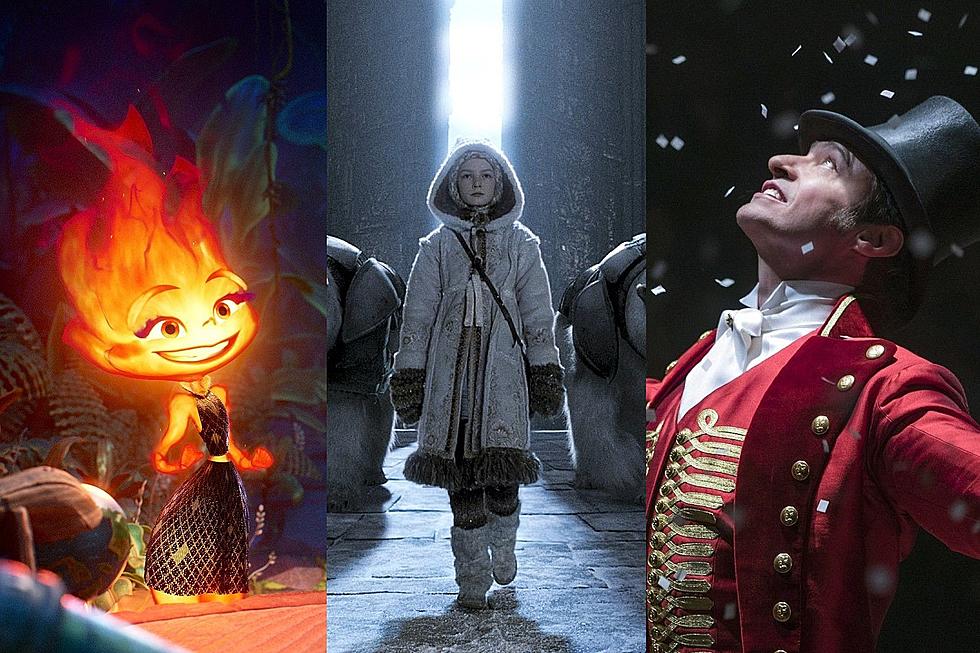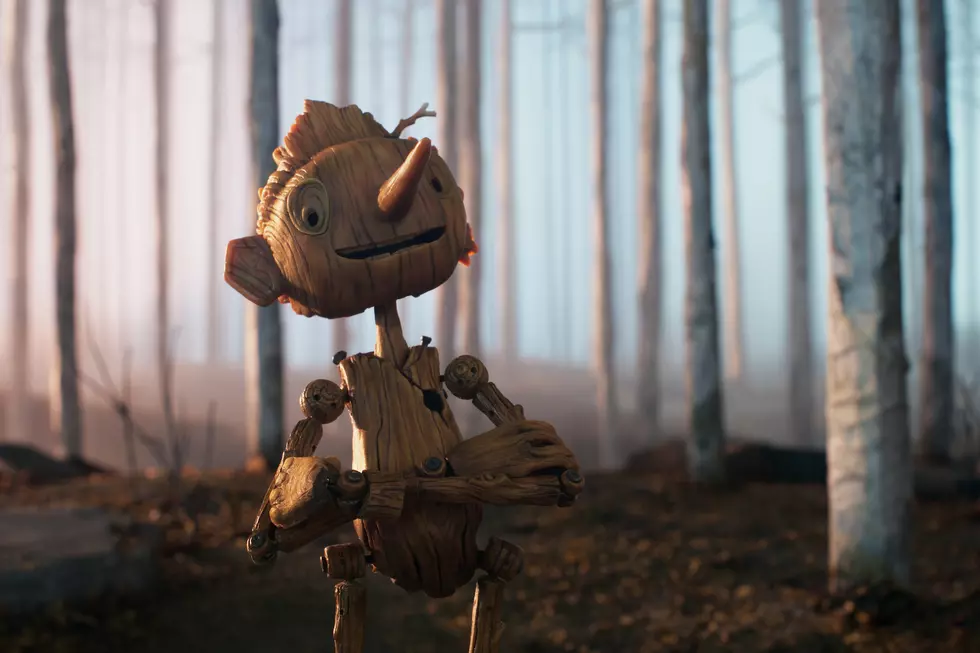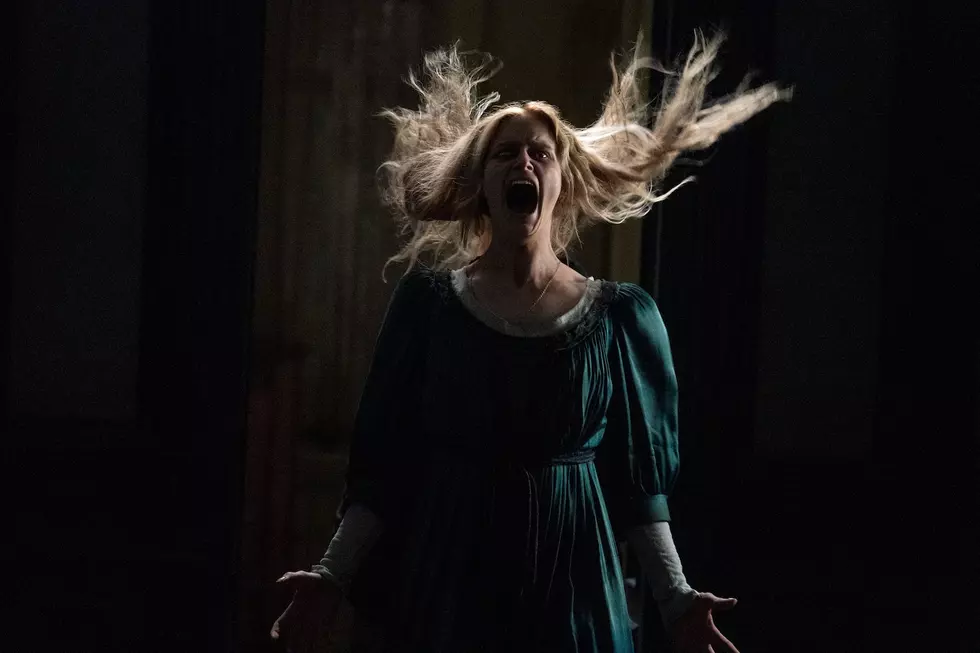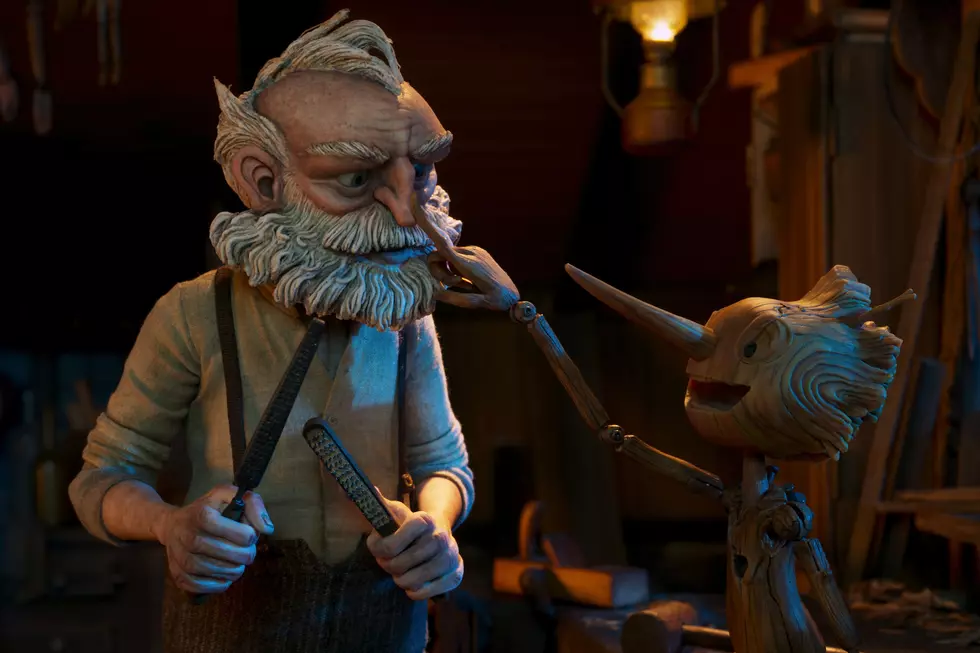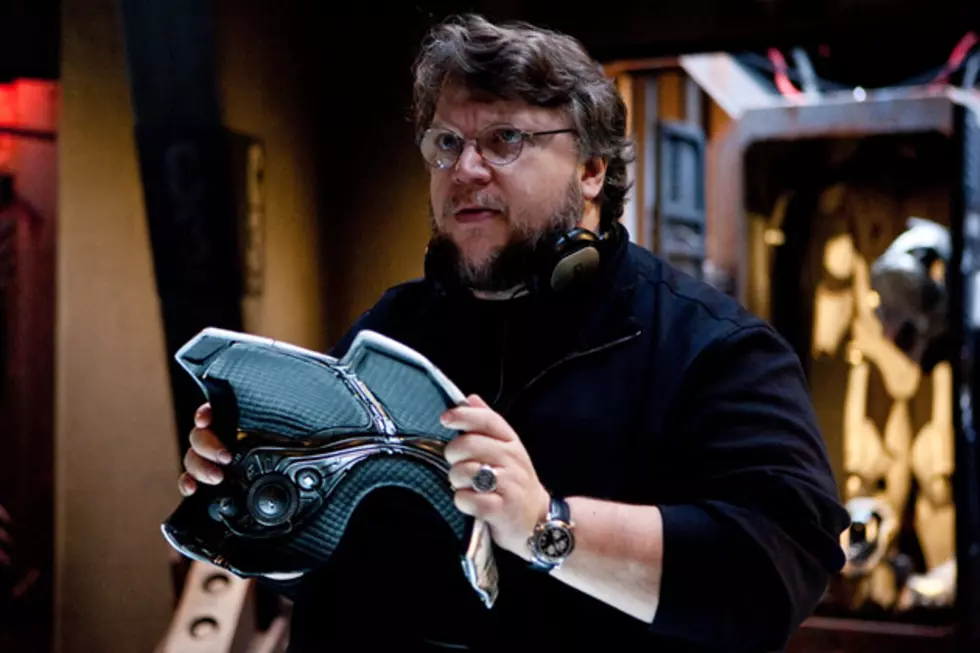
Guillermo del Toro Interview: The ‘Pacific Rim’ Director Talks Creating the Ultimate Summer Blockbuster
Leave it to a foreigner to make possibly Hollywood’s most archetypical American film of 2013, 'Pacific Rim.' Although Guillermo del Toro borrowed from Japanese monster movies and anime for his basic idea, set much of the film in foreign countries, and assembled a cast of characters that more or less defines "multiethnic" and "multicultural", he celebrates the West’s great melting pot, and its heroic traditions, with his story of monsters and the giant robots that humanity builds to fight them.
Del Toro didn’t stop there, however. His latest film, also his biggest, is a remarkably humanistic odyssey, buoyed not by an affection for militaristic power, or even the triumph of individual heroism, but the uplift of humanity coming together and prevailing, geographic and political borders be damned. We caught up with him for a substantial conversation about his latest film earlier this when, during which he offered some insights into the thematic underpinnings and conceptual foundations of this terrifically straightforward summer opus.
In addition to talking about the process of constructing a pure adventure story in an era where complicated mythologies dominate the moviemaking landscape, del Toro explored the film’s deeper, recurrent themes, and offered some insights into his creative approach as he tackles a horde of projects at one time, without any certainty when – or if – they might come to fruition.
The film is incredibly streamlined and clear in its execution. How studiously did you think about avoiding the overcomplicated nature of so many modern blockbusters as you were conceiving this with Travis Beacham?
Well, I co-wrote the movie with Travis, so it was pretty easy to engineer literally from the inside. If you go back and watch my interviews in pre-production, I basically was already engineering it like that from the get-go. Because the things that inspired this movie are very unlikely in certain aspects; for example, one of the things I loved as a kid was Zoltan Korda’s 'The Jungle Book,' because he was very exotic, he was really gorgeous to look at, really full of color, and it felt really thrilling for me. It was like, wow, that’s a land that I’m never going to be at. But every decision about this movie, very conscientiously, is hoping it works as a summer blockbuster, but it has so many choices I made that were accounted to that. I can bore you to f---ing tears and take you through the iterations, so you call time when you want me to stop, you know?
For example, we used the staple characters – the scientist, the leader, the pilot, the reluctant pilot, the rookie, all of these things – and normally, those things come with a pro-military template. They come with a template has to be a structural debris and it has to be one single country and most of the aliens get a map, one intergalactic map that shows one city – New York. You know? And most of the characters are WASPs, super-strong, hip, slang-slinging – the dialogue is very slangy, it’s hip and cool. Those choices are supported with the other half of the storytelling in my opinion, which is the audiovisual aspect of the film, which tends to be really polished surfaces. All of the machines look almost like gleaming commercials to technology – super cool fluorescent light, very commercial-oriented. Or they march like a post-modern version of the long lens, Army or Air Force recruitment of post-Tony Scott. And then we go to the choices I wanted to make with Legendary and Travis supporting me.
I said, look, I want to make a movie not about the time when we’re winning, I want to make a movie about the time we’re losing. I want to make it about the resistance. I want to make it about an English leader. I want to make it about a Japanese female pilot that has no love story with the male pilot, and that she has an interesting back story. I want to make it a story where every character that is not just a pilot or military has something to give to the operation. The scientists, the black market dealer, the leader, everybody brings something to the table, not just our hero. So then I said, let’s use the language – let’s show them being demoted in the beginning of the film, literally from being an army to being the last hope of the resistance. Let’s choose them to support that in the movie with everything looking corroded, rusty, peeling, used, dented, which is all of a piece with the language that is being used at the foundation of the story.
And then through a very clear codifying of colors, that is very, very saturated – an almost Technicolor approach, where we’re evoking comic books or anime or things like that, and a very healthy slab of blacks. And then, instead of shooting the action from a well-lit, urban environment, we are going to shoot it in very operatic circumstances – at night, in a thunderstorm, in the middle of a sleet storm, in the middle of a snowstorm, underwater in the depths of the ocean. And then I started using the term “gothic tech” – to make a gothic, or almost fantasy-oriented approach to high-tech. And then literally if you listen to the audio commentary or buy the Art Of… book, I literally can go on for quite a bit about why we made those little choices to make it something that was personal to me even if I was riffing emphatically in the same way that I say ‘Hellboy 1’ and ‘Hellboy 2’ are superhero movies.
When did the theme of duality emerge in your development of the project, from the more obvious contrast of the kaiju and jaeger to humanity and technology, the two pilots, et cetera?
That was the very first thing I pitched. When I read Travis Beacham’s pages, right away I said, “I want to do two pilots and they need to be connected, or the robot doesn’t move.” For me, I needed humanity and I needed a human story in the movie. Travis and I then latched onto that and tried to make, if you re-watch the movie, you’ll see that each of the character arcs is about trust. The father needs to trust the daughter to get in the jaeger. Raleigh needs to trust Mako with his life, and she needs to trust him with her life. The two scientists need to trust each another even if they dislike each other – and so on and so forth. Because it’s a very simple metaphor – if we don’t trust each other, the robot doesn’t move. And my ideal is that this movie reaches a young audience, and for me to feel that an audience is getting a humanistic message that is not jingoistic or forcing them to believe that the only way to be strong is to use firepower. But you can use an escapist type of adventure – Travis was already using great language like “ranger” and “marshal” and I wanted to equate that to a western movie in a way. Hong Kong is the Alamo, so to speak, you know?
Which came first in the sort of chicken and egg of having an international cast of characters in the story by necessity, and really creating a multiethnic ensemble with your casting choices? And how important is it personally to offer audiences characters who aren’t just blonde, white leading men?
Normally the way these movies work on this scale when you go to global, they work the other way – they work with a centrally nonvaried cast, and then you have cutaways. Cutaway to Calcutta, cutaway to Germany, cutaway to Paris, seeing that there also is some trouble. And I decided that in order to allow the jaegers to exist, and the kaiju to exist, I needed to be either in Hong Kong or Japan. I needed to literally grab the audience by the hand and take them to a place that is not the average place for a blockbuster. And then I thought, well, we’ve seen Japan in kaiju movies – we have many times – so it’s going to feel more like an homage, it’s going to feel a little more wink-wink nudge-nudge, and I always carefully tried to avoid postmodern reflection.
My movies are very earnest, all of them, and I try never to get postmodern about my material, so I said, you know what? We should scout Hong Kong first. So we went to scout Hong Kong, and scouting Hong Kong, I just fell in love. I knew Hong Kong as a tourist, but I just found the shipyard, I found Stonecutter’s Bridge, the way the light is blazing in neon colors and beautiful – pinks and greens and greys and blues. And then finally, we were on the harbor, and a giant boat comes by, and I go, wouldn’t that be a nice image [swinging] as a baseball bat? And that sort of was the cause for me to say, I want to do it in Thailand, you know? I want to do it in Hong Kong.
And then you know you want the jaegers to come from every country and your main character is American, your leading character is American, but think about it for one second – and this went into my first conversation with Idris [Elba]. Idris came to see me and said, what accent should I make, should I do? I said, Idris, do your own accent, and I wrote a biography for him that included him being born in North London, what happened for him to end up in Hong Kong. It was a few pages long, and it laid out his whole character for him, and I really wanted this message to play [everywhere]. Like the Australians are these because I can think of no more alpha-male type of pilots, and the Australians trying to be territorial with the new guy. And I wanted Mako to be very, very strong, but also be respectful – to have a real sense of authority and a real sense of respect to Pentecost, and a Japanese character is so ideal for this, to show this girl that can respect her father figure but is eager to prove herself, and so on and so forth. So it was a decision we arrived at from the inside out.
How tough was it to find the balance between real drama with the battles and then the humor of characters like Ron Perlman’s and Charlie Day’s?
Few people realize what a miracle it is for a movie with a red guy and a blue guy together in the frame, you know? It really comes close to being impossible to make work, and what I always think in terms of how much you can push the tone is, well, let me put it this way – I can only come to Ron Perlman. I do it little by little; like I can only go to Ron Perlman after you see some of the battles and you saw some of the crazy colors that the movie has. In other words, I’m setting a world up where the most outlandish thing in the movie is Ron’s character. That’s sort of a huge point of tone, and if I put Ron in the first 10 minutes of the movie, the tone collapses. But if I do it after I already showed you stuff that is outlandish and stuff that is outlandish but provokes an emotion, like Mako’s memory, then God willing, if you’re into the movie, you’re in. If you’re not entering the movie, you’re not entering the movie – some people will never get past giant robots and giant monsters. But if you’re walking with me on this path, by then I can introduce Ron Perlman and make it count. So tonally you handle it like this.
Like I cannot show Charlie Day in the first five minutes of the movie. I need the first five minutes of the movie to be sort of hardcore, to show what a battle looks like, and then I can show Charlie once we are now going to a foreign place – once we start bringing in the exotic elements, like Hong Kong, the heliport, this and that. And by then I’m already, visual or not, the movie’s already being color-coded, and I can start backdrafting the colors. And the first big explosion of color in the movie comes in with the shatterdome – that’s the first time I introduce huge color. And little by little, color is going to mean your palette visually and thematically – and you can start expanding until you get to candy colors in Hong Kong and you get to Ron Perlman. I always say this over and over again and it’s not just a nice phrase, I try not to make it candy, I try to make it protein in terms of whatever decision I make formally helped the world exist.
In aspiring to make a movie that avoids any political trappings, why do you think that making a sort of purely humanistic adventure movie is so important right now?
Well, I think that we are saturated by other movies that have that plot, told by people that believe in that plot. The only qualifier that I can use is that they’re not for me. That is not me, you know? I am a disappointed romantic, or an optimistic existentialist – whatever you want to say. But I have faith in mankind in spite of itself, you know? And I look at the other movies and that’s their tone – that’s a voice that is alien to me. And the only thing I can say about every movie I’ve done is that I don’t try to get into a voice that is out of my range; I always operate within my voice. And my voice doesn’t reach those notes. I’m not interested in trying to reach those notes that I don’t understand. Some people can do it perfectly and be earnest and full of conviction that says “our military structure is good,” or it’s the best way to save the earth, and so forth.
But for me, if you watch all of my movies, I celebrate imperfection. I celebrate imperfection from the way my robots look to the way my characters come together. Both in 'Devil’s Backbone' and in this movie, I make it a point to introduce a character that at the beginning, you hate, and at the end you should choke up a little at that character – and that is because I don't want the humans to just have bad guys that remain bad guys. Because I think that is not true in real life; good guys do bad things and bad guys do good things in real life. And that’s why I have such love for a character that is so reprehensible as Ron Perlman’s character – who’s just a complete rascal, you know?
There was a recent mention of a 'Slaughterhouse Five' script that Charlie Kaufman is supposed to be writing for you. How likely is that to happen?
The catch-22 with that is Charlie is an expensive writer. Universal wants to know if that’s my next movie, and right now I have 'Crimson Peak,' so I need to see what arrangements we can make. But I am more than willing to bend over backwards with any part of my deal, or any part that they require of me to secure him to write the screenplay and hopefully someday get the project going. We came up with a very great take on the phone, and hopefully when we strike the deal, we can get going. But I’ve been pursuing that one for a while.
How tough is it to continue to be able to bring these projects to fruition with so much of your personality in them? Is there anything you want to bring to the screen badly enough that you would maybe sacrifice some of that personality to see it happen?
I think that every director approaches effects a different way, and there’s no right or wrong way to approach effects. I approach them hands-on, because I think I can lead with my enthusiasm – I think I can make it infectious to the crew if they know I know my stuff. But I never do it from the point of view of arrogance or superiority where I’m, oh, you must know I know my stuff. It’s almost like I’m one of them – I’ve been in the trenches, I know what a lonely job it is to be compositing or cleaning or rotoscoping. I speak the language, and I can guide them very precisely and ultimately I can say that I finished 'Pacific Rim' with a couple of hundred really close friends at ILM. And then when we see the whole process, all of them had received the chance to work with monsters, the chance to work with robots, and a bag of Cheetos. There’s no better thing for a VFX artist.
And as for what projects I tackle, or why I tackle them, I’m 48 and I’ve made eight movies, and many others I’ve produced, but I’ve yet to tackle any project for any other reason than I’m excited for it. Some of them go wrong like 'Mimic,' some of them go right like 'Pacific Rim,' but I was discussing this with my wife, and I said, on the one hand I’m kind of ingenious and naive in the fact that I tend to trust my partnerships with the studios. But if I had not had that openness after 'Mimic' – if I had become just so guarded and spiteful, I would have never connected with Legendary in the way I connected.
More From ScreenCrush



